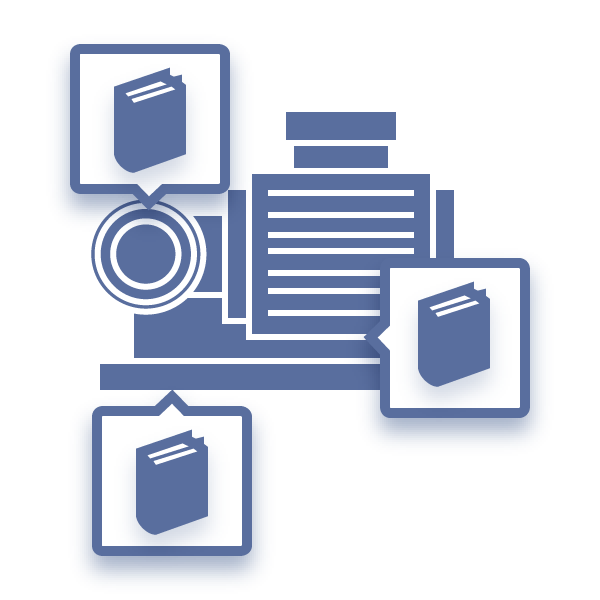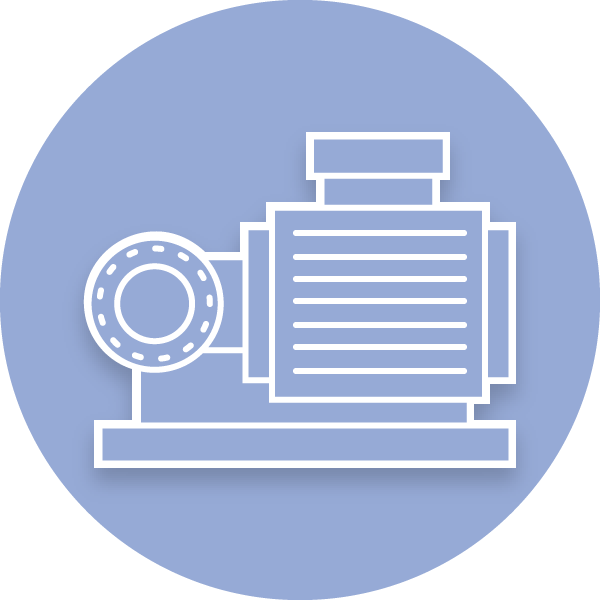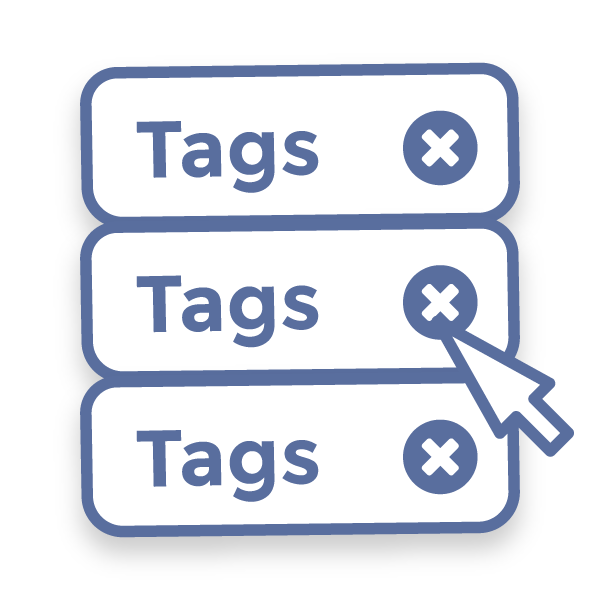 How does DocBoss help manufacturers and fabricators?
How does DocBoss help manufacturers and fabricators?
MTR packaging and management is a great feature of DocBoss that was designed to help manufacturers and fabricators deal with document control.
DocBoss can use your traceability information to help you with your MTR packaging work. The decision on which method will depend on the type of management you are doing.
Fabricators, Manufacturers
You purchase secondary steel (bars, plates etc) in specific sizes for the product. You cut, roll or CNC. You do not cast/forge from raw steel. You generally use multiple pieces of steel in each assembly
- you track the heat numbers for each piece of steel and you likewise store MTRs by heat number.
- you track which pieces of steel (or heats) are used in each assembly (via router, or directly on drawings)
- At the end of the job, you prepare a separate MTR package for each assembly, based on the heat numbers recorded on the routers, (or drawings, or production order etc)
Notes
- Heat numbers are not unique values. While a given mill will not repeat a heat number, different mills may assign the exact same number..
- The data for multiple heats may be listed on a single certificate.
- In many cases, the MTR certificate DOES have a unique number. This is not regulated, but in practice the mill certificate numbers (if applied) are sufficiently unique
- To automate the creation of MTR packaging every MTR must have a PERFECTLY unique identifier (ideally assigned by your organization) AND you must have a list of every piece of steel used, along with its unique certificate number.
- You must also be able to validate to a reasonable degree (by human spot checking) that the certificate provided for a specific piece of steel is correct (assuming no markings on the steel).
- Two pieces of steel received on different orders may have the same source heat numbers, but have different mill certificate numbers. This will occur if the secondary steel supplier creates new MTR packages for every shipment. Rather than try to cross correlate the certs – just save the new cert for the new steel.
- Your MTR packaging may be second hand (if you are buying from a distributor), or first hand (if buying from secondary steel supplier. If from distributor, you may receive different certs for each piece of steel. If from secondary steel supplier – you may have all MTR packages for the entire purchase on one certificate.
Best Practice for Storing / Recording MTRs
 DocBoss’s MTR packaging feature is great for manufacturers and fabricators.
DocBoss’s MTR packaging feature is great for manufacturers and fabricators.
Create Cert #:
As it enters your facility, assign a unique number to every certificate number, and store the certificates by that number. This avoids any possibility of storing two different MTR certificates using the same number. The number must be recorded in your order management system.
Benefits:
- Allows companies to store one copy of a certificate, and correlate multiple lines of an order to the same certificate (it is possible that MTR data for multiple PO lines is listed on one cert).
Downside:
- Requires that every cert number is uniquely generated.
- Some customers want the heat numbers available for building books. They need a separate database in which to record heat numbers on the cert.
Built Cert #:
An alternative approach is to store the certificate using a combination of parameters related to the equipment and the PO.
Typical combination
- Heat #: 67867
- PO, Line #, Receipt#: 7833-01-IR4435
- All values are from ERP system. We include receipt number here because MTRs received from primary sources are built to include all data from the shipment. While the data for the specific heat will be the same, the actual MTR document for two shipments may be different (and as a result must be stored independently). Could be receipt date/time too if no receipt #s in system.
- Result: 67867_7833-01-IR4435
Some companies like to include the description. If you do – I suggest you put it in brackets, so you can use the initial data as your lookups.
- Description: 80×80 1/4″ steel plate
- Result: 67867_7833-01-IR4435_(80×80 1/4″ steel plate)
Benefits:
- Links certificate directly with the specific piece of steel in the order system
- Uniquely identify the document inside the organization.
- Includes Heat Number for later use
Downsides:
- May need to store one certificate multiple times (for each line if same)
- Long file names must be perfectly entered. Hard to use automation in case different users enter the data differently.
- Transaction numbers could change (admin change in ERP system),
In both cases it is critical that cert numbers are recorded accurately in the materials management / Business / ERP system, and that certs are stored with the appropriate file names. Storage of the documents in a document management system, with both the certificate number, as well as the combination would provide additional assurance that the data is searchable.
Using DocBoss for MTR Packaging
Ongoing:
Upload all mill certificates into the DocBoss library on receipt, using the unique certificate number (either generated, or built) as the sub-supplier document name.
(If you use create cert #s, you could use DocBoss keyword fields to store additional metadata.)
For every project:
Upload your correlations sheet (containing a single line for every unique piece of steel) to the steel tab in DocBoss. You must include the certificate #. Tag # allow DocBoss to build packages by tag. Description allows us to build indexes including the description values. You can add additional data (BoM#, Drawing # etc) all depending on the data you want to include in the created book.
-
| 2″ elbow |
Cert 12345 |
T-101 |
| 4″ elbow |
Cert 12345 |
T-101 |
| 2″ pipe |
Cert 45678 |
T-101 |
| 4″ pipe |
Cert 45678 |
T-101 |
| 2″ pipe |
Cert 45678 |
T-102 |
| 4″ pipe |
Cert 66666 |
T-102 |
- Create a new doc code in the document requirements screen for “Individual MTR Certs”
- Set level to certificate. This will create a DRC for every certificate.
- Set stage list to “Hide from Customer”.
- Set type to “Published”
- Click the autolink button on the doc code to automatically pull the library certificates into the project specific MTR cert DRCs.
- Create a compilation Called “MTR packages”, and inside, it should contain ONLY the ONE code created in the previous step “Individual MTR certs”.
- For the MTR Doc code on the document requirements list (normally there is at least one code asking for MTRs – if not you will have to add one)
- Set level to your grouping column. In this example – the column by which I want to create MTR packaging is the “assembly (there will be 2 packages created – one for T-101, and one for T-102. This will create a DRC for each of the assemblies.
- Set type to “Compilation“
- Click the assign icon, and choose the compilation you created in step 3.
- Generate. Each DRC will be filled with the correct MTRs for the specific assembly.
Distributors – Every unit has a unique tag (i.e. instrumentation / pumps / control valves etc.)
You receive a unique MTR package (might contain many MTRs) for EVERY piece of equipment (correlates to a specific tag//serial number).
- The piece of equipment (unit) already carries a unique tag/serial number. You store the MTR package you received by the same tag/serial number. There is a one to one relationship between the MTR package and the Unit.
In DocBoss: Set the MTR code (on your document requirements list) to TAG, creating an MTR register for each tag. There is no requirement to use the library in this equation – as every package is unique for the project. Just upload the tag specific MTR packages directly into the registers.
Distribution – Every unit does NOT have a unique tag (i.e. mechanical valves)

You receive a unique MTR certificate (or could be a package) for each combination of “Your PO + Model Number + Size + Shipment”. The MTR is generally created by the manufacturer of the equipment (cert is directly from manufacturer).
- The MTR lists all of the heat numbers (and compositions/testing) applicable to the above combination.
- There is only one cert for each valve (even though there may be multiple heat numbers).
- To maintain traceability (especially on stock equipment) you have 3 options:
a. you record the MTR certificate number on each piece of equipment (and store the MTRs by certificate number, not heat number)
b. you record your PO + Line + Shipment # on the valves, and store the certificate by the same values.
c. you do not record anything on the valves. You use a combination of heat numbers + model number + size to store the certificates i.e. {body heat+bonnet heat}+Model Number + Size. On shipment, someone pulls this information from EVERY valve (must be exact character sequence). The list of unique combinations is then used to find the relevant certificates. NOTE:This does NOT guarantee uniqueness of certificates. It is possible that body+bonnet heats are the same over 2 shipments, but that the disc heat is different. This mechanism does not account for that possibility and may return multiple matches which will require further investigation. A secondary lookup mechanism is required to find the appropriate certificate from component heat numbers.
In DocBoss –
- Add a column for “certificate” to the tagged equipment tab in order detail.
- For every line, take your correlation sheet, and upload (or enter) the appropriate cert number.
- If there are more than one certificate for a specific line in your order detail, duplicate the line (you can leave the line number with “(copy1)” or edit the lines to use sublines like 1.a, 1.b.
- Follow steps 2-4 listed in the fabricator/manufacturer section above. The grouping column in this scenario will likely be the line number (seems to be the prevalent setting, as one line number “1” may have multiple certificates.)
The key take away: you must have a unique lookup (certificate number) for each line and the MTR certificate. That data must be pre-determined, and uploaded into DocBoss. DocBoss will not lookup the cert# based on a subset of parameters (heat#, PO, line, supplier, model etc). That lookup must occur outside of DocBoss. That process is available as a custom development option, or through one of our partners.
To read more about MTR packaging with DocBoss, you can view this page that goes into great detail regarding how pump and compressor manufacturers (among others) can utilize the MTR packaging feature to help them with your documentation work.
You can also view an updated version of this article: MTR Packaging & Management in DocBoss (Updated)


 DocBoss’s MTR packaging feature is great for manufacturers and fabricators.
DocBoss’s MTR packaging feature is great for manufacturers and fabricators.